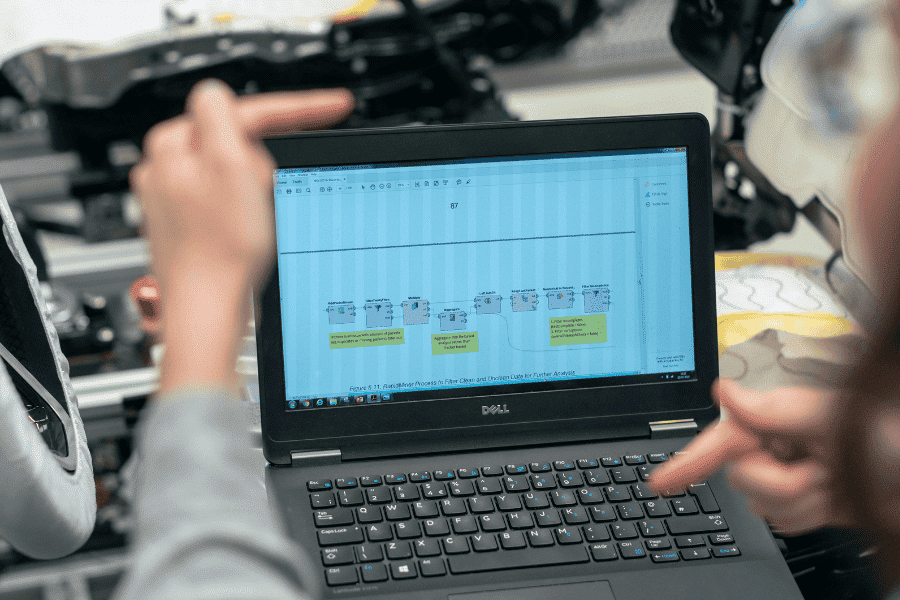Related Resources
The hiring process has long revolved around resumes. For decades, talent acquisition has relied on these documents as the central reference point for screening and evaluating candidates. Yet, resumes often present a limited, sometimes inaccurate, picture of a candidate’s skills, potential, and cultural fit. In today’s rapidly evolving workforce, traditional hiring methods are struggling to keep pace.
Artificial intelligence (AI) is changing that. By going “beyond resumes,” AI is reshaping how organizations attract, assess, and engage talent. From parsing skills hidden in digital footprints to predicting performance and cultural alignment, AI-driven talent acquisition is more dynamic, holistic, and data-informed than ever before.
The Limitations of Resume-Based Hiring
Resumes provide a summary of a candidate’s career journey, but they often fail to capture the full story.
Bias and Subjectivity:
Resumes are filtered through human perception, which can introduce unconscious bias — whether in terms of gender, ethnicity, or even formatting style.
Inflated or Misleading Content:
Candidates may exaggerate achievements or include vague buzzwords that don’t accurately reflect abilities.
Static Nature:
A resume reflects past experiences but offers little insight into potential, adaptability, or learning capacity.
Volume Overload:
Recruiters often face hundreds of applications, making it impossible to thoroughly evaluate every resume.
These shortcomings highlight why organizations are moving toward more advanced, AI-powered hiring practices.
How AI Is Transforming Talent Acquisition
AI augments traditional recruitment by broadening the scope of evaluation and automating repetitive tasks. Instead of relying solely on static resumes, AI draws insights from diverse data points, ensuring a more accurate and comprehensive view of candidates.
Smarter Candidate Sourcing
AI tools scan job boards, social media platforms, professional networks, and internal databases to identify potential candidates who may not have formally applied. This expands the talent pool and reduces the reliance on resumes alone.
Skills-Based Matching
AI systems can parse job descriptions and map them against candidates’ skills, experience, and even transferable abilities. For example, a marketing professional with a strong data background might be identified as a fit for an analytics role — something traditional keyword searches would miss.
Automated Screening
AI-powered applicant tracking systems (ATS) use natural language processing (NLP) to analyze resumes, cover letters, and online profiles at scale. They filter out unqualified candidates, saving recruiters time for deeper engagement with high-potential applicants.
Predictive Analytics
Machine learning models can forecast candidate success by analyzing past hiring data. These models predict which candidates are most likely to excel based on skills, cultural alignment, and historical performance of similar hires.
Candidate Engagement
Chatbots and conversational AI handle initial outreach, answer FAQs, and schedule interviews. This ensures consistent communication and keeps candidates engaged throughout the process.
Beyond Resumes: New Data Sources for Hiring
AI broadens the lens through which talent is evaluated, incorporating non-traditional data sources.
Digital Footprints
Candidates leave trails across platforms — GitHub for developers, Behance for designers, or LinkedIn endorsements for professionals. AI can analyze these footprints to gauge expertise and impact.
Skills Assessments
AI-driven assessments evaluate candidates through gamified tests, coding challenges, or situational judgment exercises. These provide objective, real-time insights into capability.
Video Interviews
AI analyzes video interviews for verbal and non-verbal cues, from tone of voice to word choice. While this raises ethical questions, it also helps recruiters evaluate soft skills and communication styles.
Internal Mobility Data
AI can identify existing employees who match open roles, promoting reskilling and upskilling as alternatives to external hiring.
Cultural Fit Indicators
By analyzing communication patterns, team dynamics, and company values, AI helps predict whether a candidate will thrive within a particular organizational culture.
Benefits of AI in Talent Acquisition
The rise of AI in recruitment isn’t just about saving time or reducing paperwork. It represents a shift in how organizations identify and engage with talent, moving from reactive, resume-driven processes to proactive, data-driven strategies. When applied responsibly, AI enhances both recruiter efficiency and candidate experience, creating value on both sides of the hiring equation. These benefits span operational improvements, cost savings, and even cultural gains.
Efficiency and Speed
AI drastically reduces time-to-hire by automating sourcing, screening, and scheduling. Recruiters can focus on high-value activities like interviewing and relationship building.
Broader, More Diverse Talent Pools
AI can surface candidates from underrepresented backgrounds who might otherwise be overlooked due to nontraditional resumes or lack of formal education.
Improved Candidate Experience
Consistent communication, quick feedback, and personalized recommendations make candidates feel valued throughout the process.
Data-Driven Decisions
By relying on analytics rather than gut instinct, organizations can make more objective and defensible hiring choices.
Reduced Hiring Costs
With streamlined processes and higher-quality matches, companies spend less on prolonged vacancies and failed hires.
Challenges and Risks of AI in Recruitment
While promising, AI in hiring comes with challenges that must be carefully managed.
Algorithmic Bias
If training data reflects existing inequalities, AI can replicate or even amplify those biases. For example, an AI trained on historical hiring decisions may disadvantage women or minority candidates.
Lack of Transparency
AI models can act as “black boxes,” making it difficult to explain why certain candidates are advanced or rejected. This creates compliance and trust issues.
Privacy Concerns
Analyzing digital footprints raises questions about consent and ethical data usage. Candidates may not know their public activity is being evaluated.
Over-Reliance on Technology
While AI offers speed and scale, overdependence can strip away human judgment and empathy — qualities essential in assessing cultural fit and soft skills.
Best Practices for Responsible AI in Hiring
Organizations that want to harness AI in recruitment while avoiding pitfalls should adopt a balanced approach.
Ensure Transparency
Candidates should know when and how AI is being used. Clear communication builds trust and reduces perceptions of unfairness.
Audit for Bias
Regularly test algorithms for bias across gender, ethnicity, and socioeconomic lines. Corrective measures should be taken if disparities emerge.
Maintain Human Oversight
AI should augment, not replace, human decision-making. Recruiters must remain accountable for final hiring choices.
Focus on Skills and Potential
AI should prioritize measurable skills and demonstrated potential over proxies like education pedigree, which often perpetuate inequality.
Respect Privacy
Organizations must comply with data protection laws and establish clear guidelines for what candidate data is used and how it’s stored.
The Future of Talent Acquisition with AI
Looking ahead, AI will continue to push hiring beyond resumes toward dynamic, skills-first recruitment.
Skills Marketplaces:
AI will enable organizations to focus less on formal titles and more on the skills candidates can bring to the table.
Proactive Career Development:
Predictive analytics will guide employees on what skills to learn next, aligning individual growth with organizational needs.
Personalized Candidate Journeys:
Just as customer journeys are personalized, candidate experiences will be tailored through AI-driven touchpoints.
Integration with the Gig Economy:
AI will help companies tap into freelance and contingent workforces more efficiently.
Greater Accountability:
As regulation catches up, organizations will need to demonstrate fairness and transparency in AI-driven hiring.
Why Acting Now Matters
The competition for talent has never been fiercer. Organizations that rely solely on resumes risk missing high-potential candidates who don’t fit traditional molds. By adopting AI-driven recruitment responsibly, businesses can widen their talent pool, reduce bias, and build stronger teams for the future.
At the same time, the stakes are high. Misusing AI can erode trust, perpetuate inequality, and damage brand reputation. Companies that balance efficiency with ethics will gain a lasting edge.
Conclusion: Redefining Talent Acquisition
AI is not eliminating resumes but placing them in context. Resumes will still play a role, but they will no longer be the sole determinant of a candidate’s worth. By going beyond resumes, AI allows organizations to evaluate people more holistically—considering skills, potential, cultural alignment, and even adaptability.
For recruiters and hiring managers, this means a shift from administrative gatekeeping to strategic talent stewardship. For candidates, it means more opportunities to showcase their true abilities. And for organizations, it signals a new era where hiring decisions are faster, fairer, and more future-ready.
In redefining talent acquisition, AI is not just changing how we hire; it’s changing how we think about talent itself.




